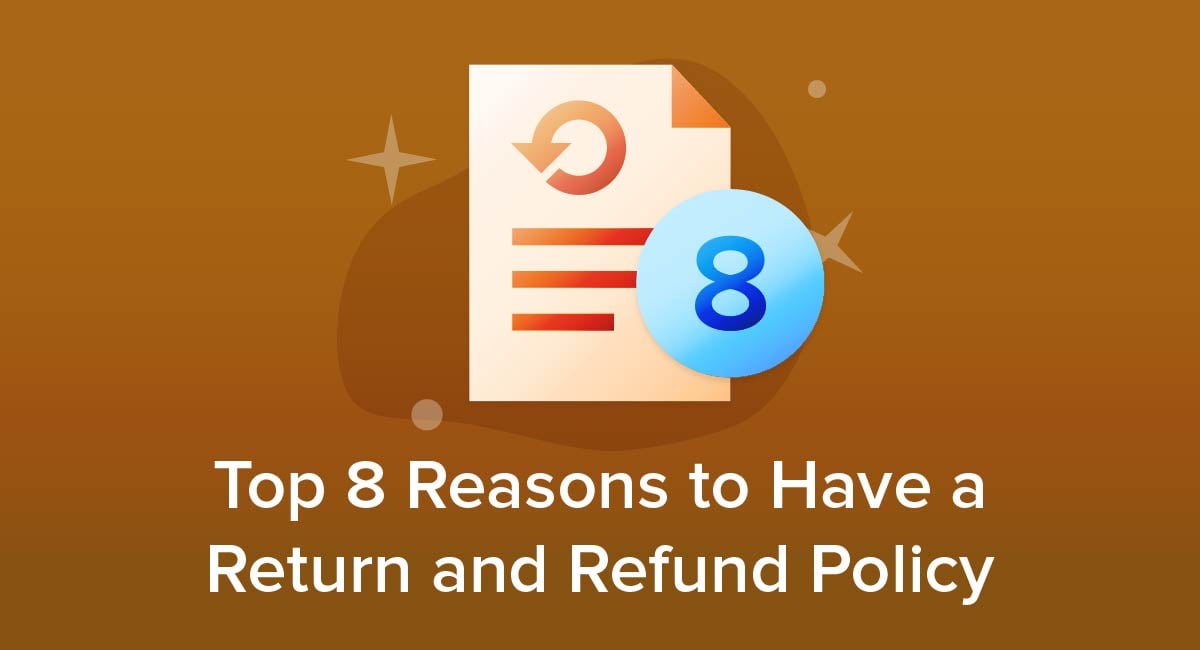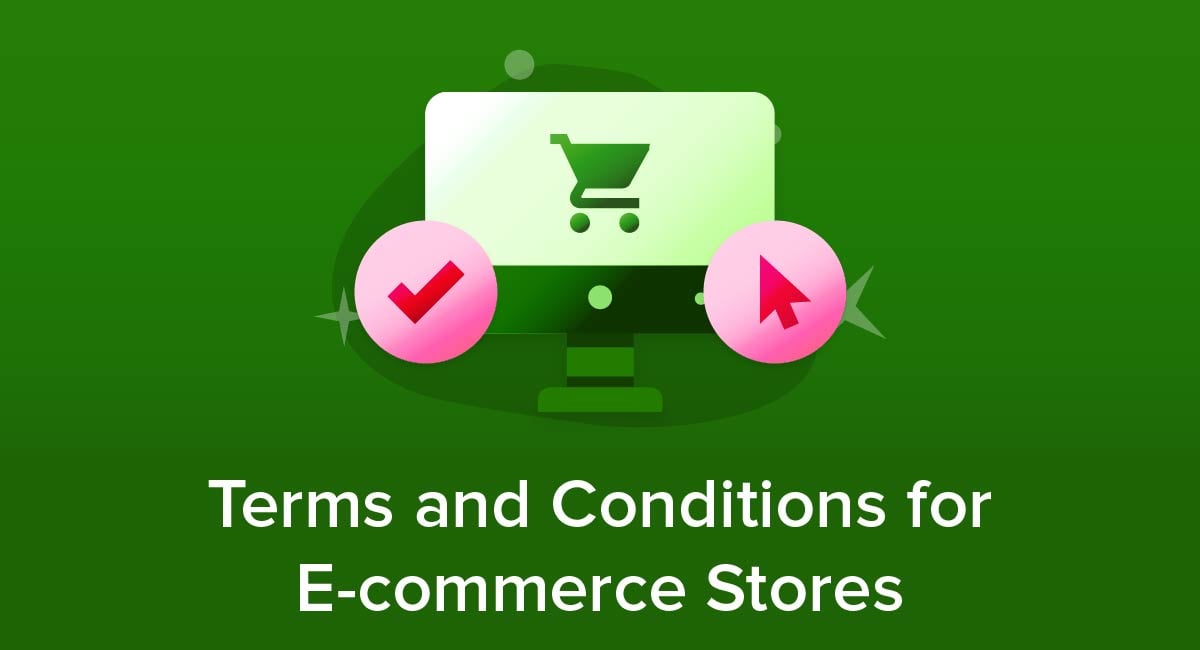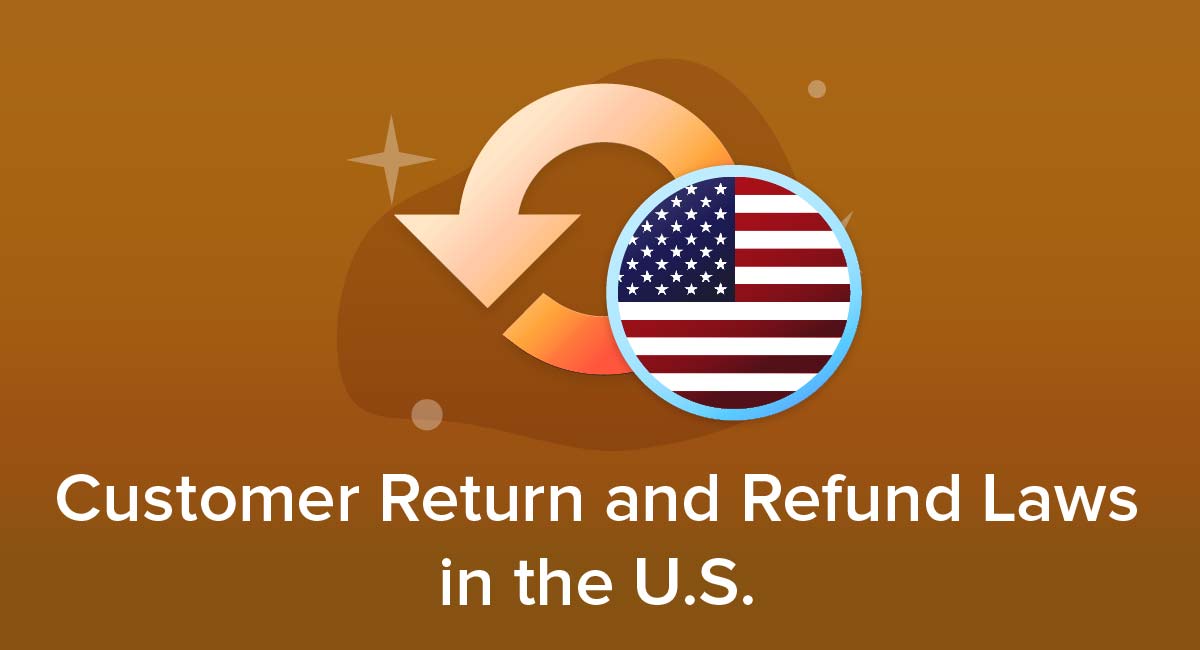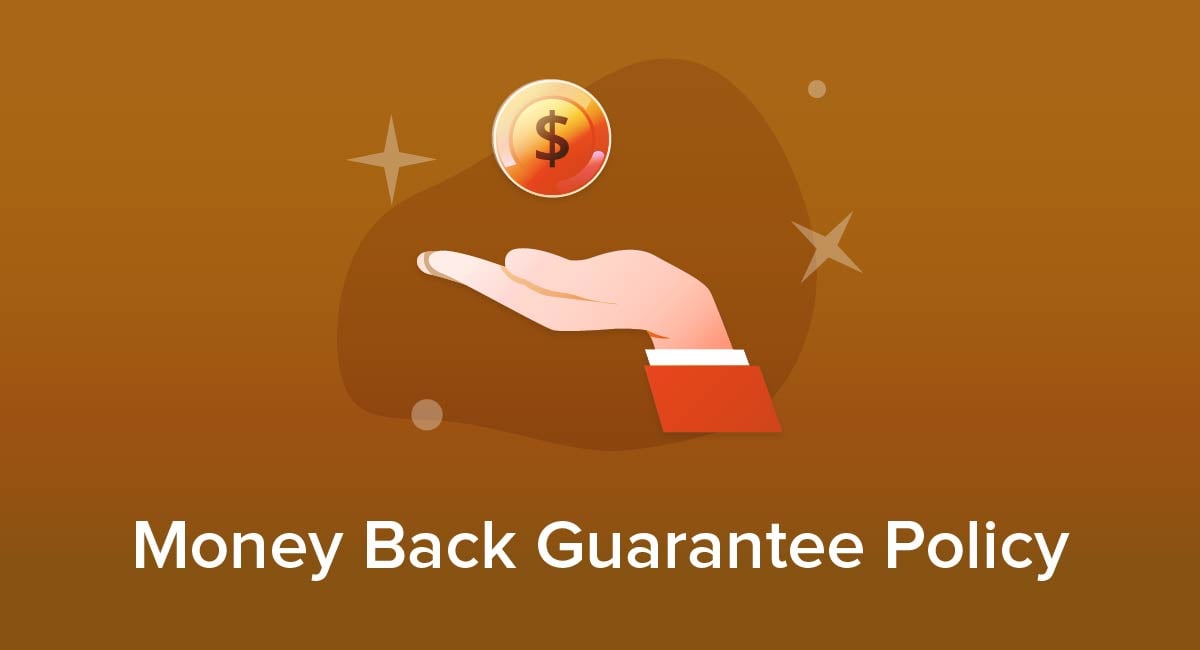
Ecommerce stores and websites are always looking for ways to boost their reputation and bring in new consumers. A Money Back Guarantee Policy is one way to do this. It can create trust between your customers and your company, while also helping the risk management for your website.
This article will be a helpful guide for how you can create your own Money Back Guarantee Policy and why it may be extremely beneficial to your website.
Use FreePrivacyPolicy.com to generate the necessary legal agreements for your website/app:
- Free Privacy Policy Generator
- Free Terms and Conditions Generator
- Free Cookies Policy Generator
- Free Disclaimer Generator
- Free EULA Generator
- Free Return & Refund Policy Generator
You check our Free Cookie Consent to start making your business legally compliant with the Cookies Directive in the EU.
- 1. What is a Money Back Guarantee Policy?
- 2. Why is a Money Back Guarantee an Important Policy?
- 3. How to Create a Money Back Guarantee Policy
- 3.1. What is Your Guarantee
- 3.2. The Guarantee's Time Limit
- 3.3. What a Customer Must Do to get a Refund
- 3.4. The Method and Format of the Refund
- 3.5. Conditions and Limitations to Your Money Back Guarantee
- 4. Where to Display Your Money Back Guarantee Policy
- 5. Summary
What is a Money Back Guarantee Policy?
A Money Back Guarantee Policy is essentially a promise by your company that if a consumer buys a product or service from you and it is wrong, broken, or the consumer is unsatisfied, their money will be refunded.
It's a simple policy that can be included within other policies on your website, or as a separate one.
While a Money Back Guarantee is not legally required to be on your website or app, it's still a quite important policy for a number of reasons.
Why is a Money Back Guarantee an Important Policy?
Your Money Back Guarantee Policy serves a dual purpose. It offers benefits for both your company and for your consumers.
First, it assures your consumers that if there is something wrong with their purchase, your company will refund their money.
Secondly, it can boost your website or app's reputation with customers since you are promising the quality of your goods and will deliver on that promise if there is something wrong. This is especially important if customers are visiting your site for the first time.
Having a "satisfaction guarantee" can be a good way to create a good relationship between the consumer and your site. The policy means your site stands behind the quality of your product and service. This can be a major factor for consumers to purchase from your site and to come back for more.
A Money Back Guarantee isn't necessary for every company. You should weigh the pros and cons of having this policy.
It can benefit your company by giving assurances to your customers and help to convert them into long-time customers. However, if you don't craft your policy carefully then you can potentially face issues of "refund frauds" and customers taking advantage of your policy. You will have to weigh the risk reduction with the potential defrauders.
How to Create a Money Back Guarantee Policy

There's no exact template for a Money Back Guarantee Policy. It can be as long or as short as you want it to be. However, it's a good idea to keep it short and simple so consumers can understand it easily.
Some websites use bullet points to point out major points and others use graphics to detail the step-by-step process consumers must do through to get their refund.
Before you decide what to put in your guarantee, decide how you are going to craft it. How you write the guarantee is just as important as the terms.
It's best to keep the language simple, clear, and concise. This isn't a Privacy Policy or Terms of Conditions agreement that has a lot of moving parts. Customers will want to learn what your guarantee is and what they need to do if they want their money back. Straightforward and simple is the best option.
Additionally, think about using graphics to guide your consumers to the steps they need to take for how to get their refunds.
DreamHost's Money-Back Guarantee policy is an example of how to combine clean, clear text with graphics to engage the customer:
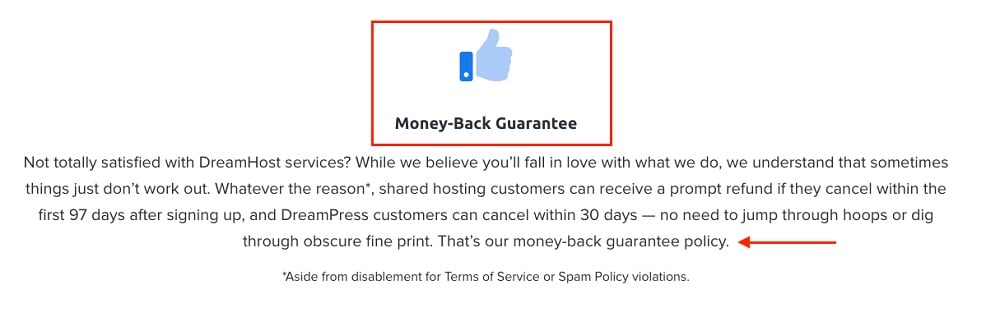
Below are a few key clauses that you can consider to include in when drafting your policy. What clauses to include depends on your company's services/products and how you want to protect your company.
What is Your Guarantee

You'll next need to decide what exactly you are guaranteeing and how will customers trust that guarantee. What you are guaranteeing typically revolves around two things: Goods, and services.
For goods, you are usually going to guarantee that the product you are selling is correct, not broken, complete, and will be satisfactory. Services, on the other hand, may be that your work will last an "x" amount of time or that your services are done at a certain level of quality. Whatever it is, you need to make sure the guarantee matches your goods or services.
If your company offers services, an example of how you can guarantee your work is how Midas does it:
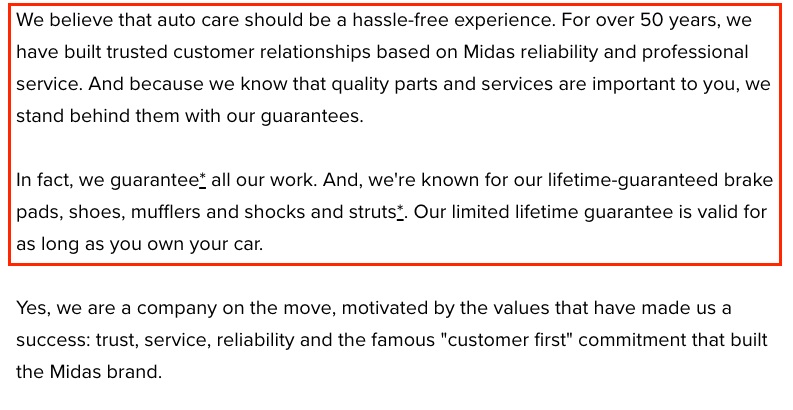
Always make sure that what you are guaranteeing is something that you can actually guarantee. A Money Back Guarantee is a good way to create goodwill with customers, but you need to be able to back up what you are promising. Otherwise, it may do more harm than good.
What you are guaranteeing in return for something going wrong will most likely be a refund or discount on future services or purchases. You can tailor what you refund to what you provide, but money is the most common.
Take a look at how Domino's Pizza simply states its guarantee and promise of refunding the customer:
![]()
The Guarantee's Time Limit
While a Money Back Guarantee Policy can be a great way to build your customer base, it could also potentially leave you open to those who would take advantage of your guarantee. This is why it's highly recommended that you include a time limit in your policy.
You can limit the amount of days customers have to ask for a refund, or when your guarantee expires. The length of time depends on your website and services.
If you are an ecommerce store, consider taking into account shipping delays and other potential issues. You want to give your customer enough time to decide if there are issues, but you don't want to leave your company at a disadvantage either.
Wayfair balances this by giving a buffer of 30 days from "delivery" to avoid shipping delays:

This section can be whatever you want it to be, but remember to be reasonable for both you and the customer.
What a Customer Must Do to get a Refund

After you've decided what you are guaranteeing and your time limits, the next step is how can a customer request a refund.
A side note on this section: You will find many Money Back Guarantees included in a website's general Return & Refund Policy as the steps for both policies often cross-mingle with each other.
Take into account when drafting this section what your goods or services are. If you have a brick-and-mortar store and an ecommerce store, you may need to include two different ways for how to get a refund. For services, it may mean filling out a form and an email to present at your next appointment.
Don't make the steps too difficult or convoluted. As mentioned earlier, keep it simple and clean. This is a good place to further implement graphics to aid your customers.
One of the best examples of this is eBay's colorful and informative three-step process for how to return an item and get a refund on its Money Back Guarantee page:
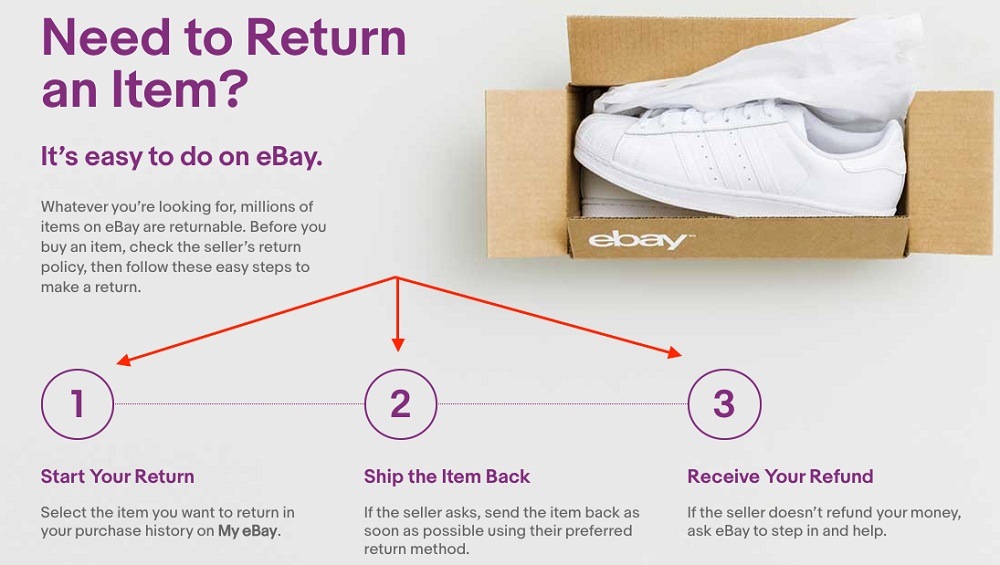
The Method and Format of the Refund
No matter whether you are promising a money refund, store credit or a discount on services, you need to state how that will happen. Will it be a direct refund to a bank account, credit in store or on your ecommerce website, or will it be a coupon to use later on?
This needs to be included somewhere in your policy to notify consumers of how they will know they receive their refund. Stating this can potentially help you if there is an issue over notification of delivery or if the refund was processed.
Michael Kors states in its policy that refunds will be refunded back to the customer's account and an email will be sent as well:

Note that your customers will surely be happier here if they get 100% of their money back in the same format given.
Conditions and Limitations to Your Money Back Guarantee

We mentioned earlier that a Money Back Guarantee Policy can be a great benefit to your website. However, it can also pose potential issues with defrauders. This is why including a "Subject to Conditions" section or something similar may be a good option to protect your company.
This clause can simply be that after the time limit has run refunds will no longer be allowed. You can also remind consumers that the guarantee is subject to certain terms or they must go through certain steps to get select guarantees. Not including this section could leave your website open to a snowball issue with too many requests for refunds.
H&R Block protects itself from these issues by stating that the guarantees are subject to its Terms and Conditions and customers must apply to "qualify" for one of its guarantees:
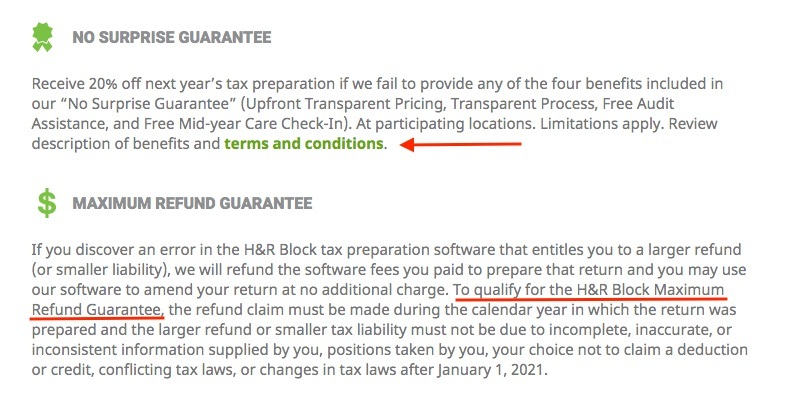
Once you've covered all bases and included all the most important information in your policy, it's time to get it out there to your customers and potential customers. Here are some tips and best practices for displaying your policy.
Where to Display Your Money Back Guarantee Policy

Like other policies on your webpage or app, where you display your Money Back Guarantee Policy is crucial. There are many places you can include your policy, such as somewhere on your homepage, or on individual product pages.
Here are few suggestions for where you can include your Money Back Guarantee Policy:
- Within your Terms and Conditions Agreement: A place where you can include either your complete Money Back Guarantee Policy, or a link to your separate policy is within your Terms and Conditions Agreement. Your policy may overlap with some of your terms, so this may be a good option.
- In your website footer: One of the best places to put a link to your Money Back Guarantee Policy will be the footer of your webpage. This is especially important for ecommerce stores or websites that sell a large amount of products. Consumers will want to know how they can return or get a refund if they have an issue and they will likely know to look in the footer, since this is where most important links are placed.
- On product pages: You can include a link to your policy on individual product pages. This may not be as common on ecommerce stores, but may be smart if you have fewer products on your website. Having the link easily accessible on the few product or services pages will make customers aware of your goodwill.
- Within your Return and Refund Policy: Some websites include a Money Back Guarantee Policy coupled with a Return and Refund Policy. As these often go hand-in-hand, consumers will naturally think of them together. If you do decide to do this, make sure to clearly state the steps consumers need to take.
- On a separate Guarantee page: You can also have a whole separate guarantee page if you provide a large list of services or products or have in-store and online purchases.
To see how to do this, you can check out H&R Block's guarantee page that provides detailed steps for every guarantee they offer.
Summary
Remember, a Money Back Guarantee isn't required by law, but is highly recommended to have if you run an ecommerce store or provide services. It is a good way to build up your customer base and create a trustworthy reputation, but don't forget to balance protecting your site as well by including restrictions.
When drafting your Money Back Guarantee Policy, remember these key tips to utilize your policy in the best way:
- Keep your language simple and clear
- State what you are guaranteeing and refunding
- Note whether there is a time limit on your guarantee
- Outline what steps customers need to take
- Disclose how customers will receive their refund or compensation
- Note whether your guarantee is subject to any terms or limitations
